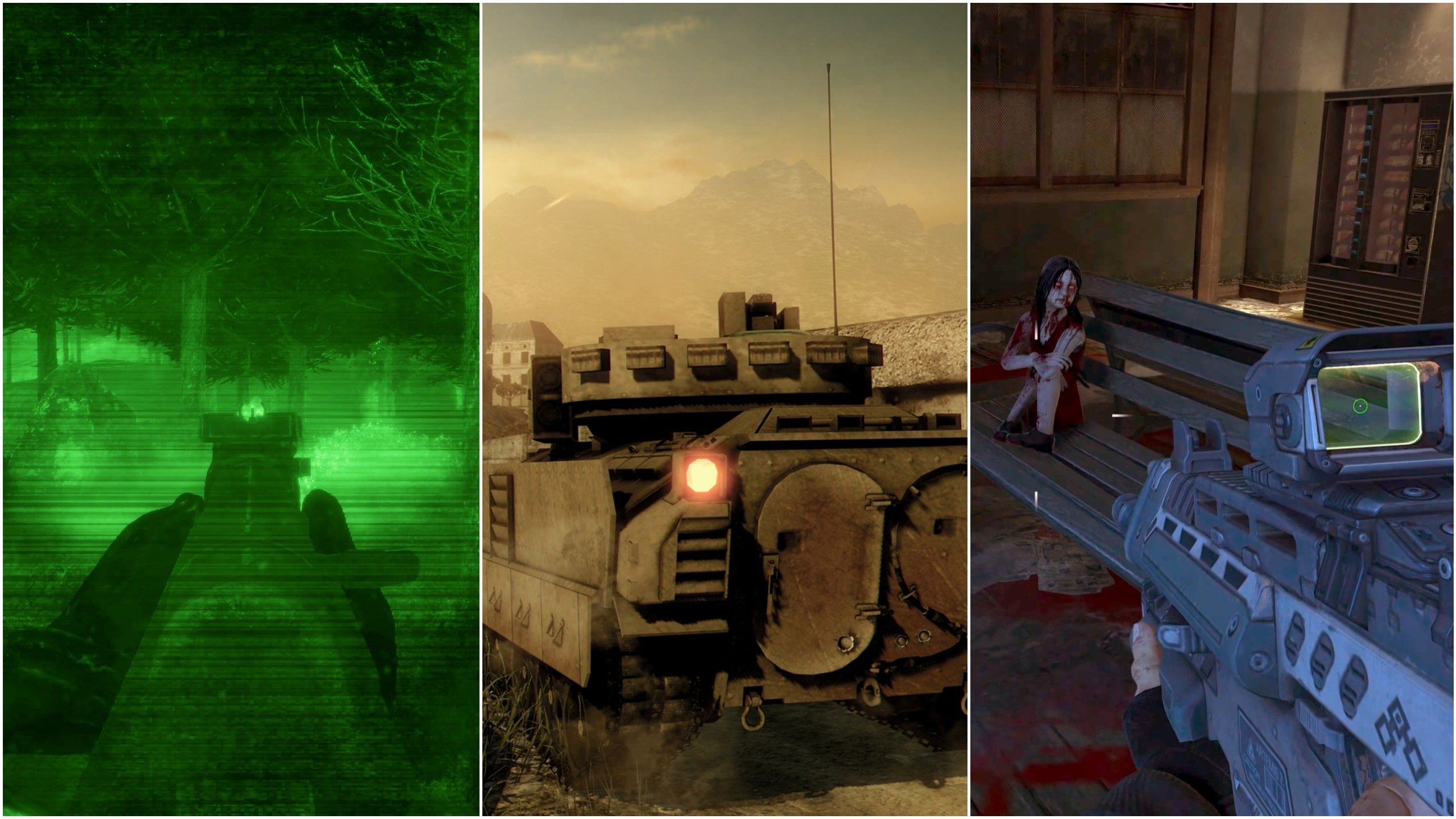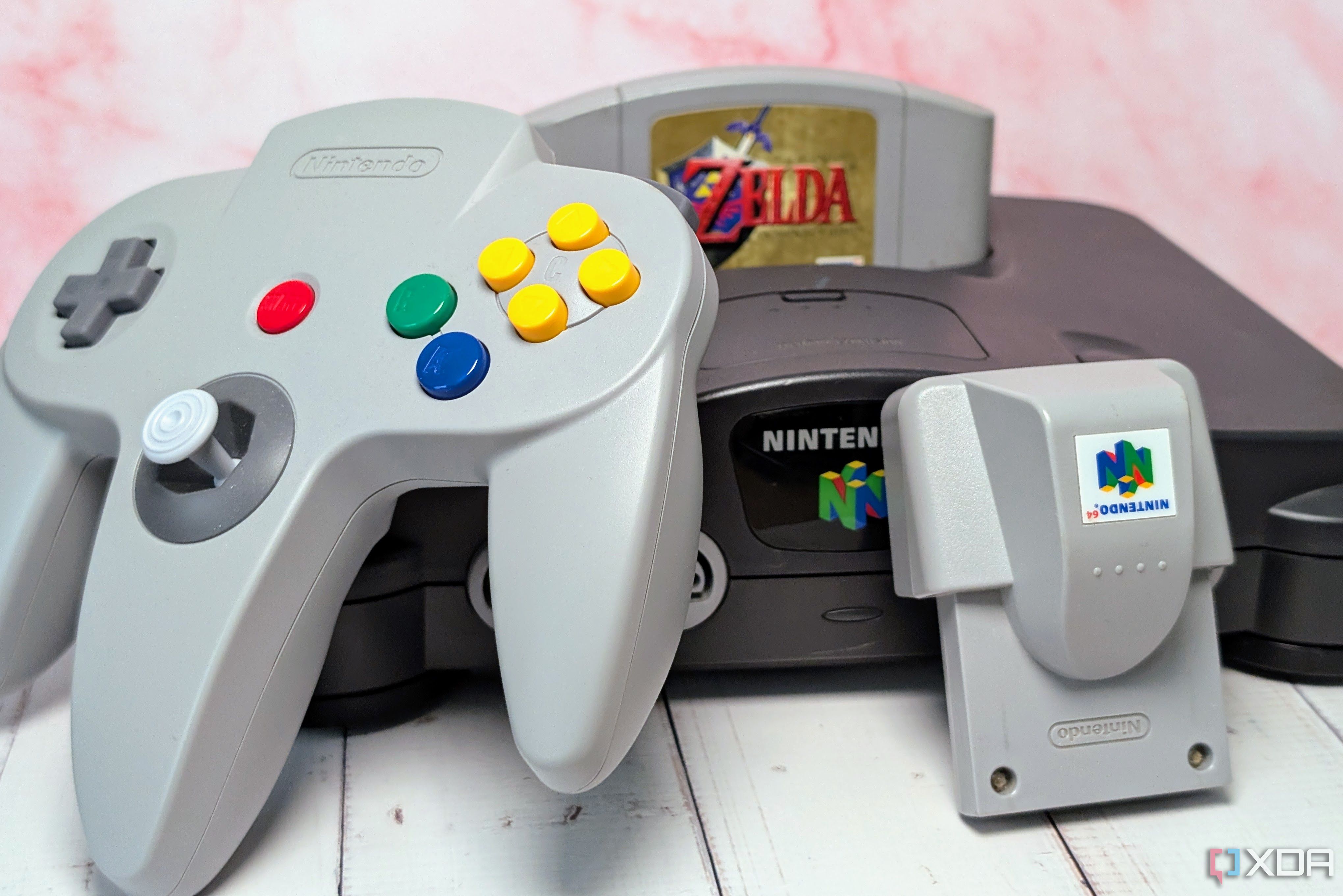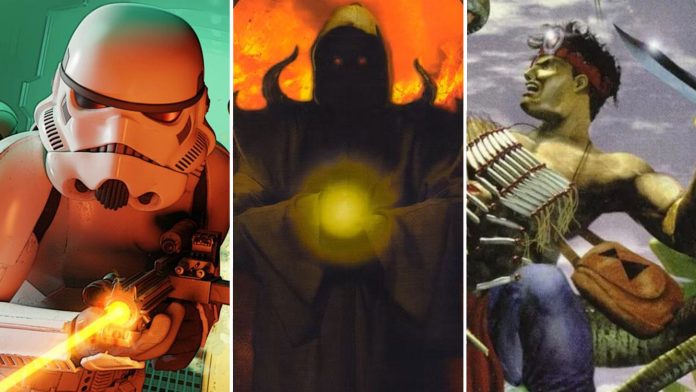As someone who grew up during the 90s, I’ve played a lot of video games that were similar to the classic Doom from 1993. Id Software’s hellish first-person shooter was so inspirational to so many games that it spawned an entire sub-genre. These games were dubbed Doom-like shooters, since they emulated a lot of the best aspects of the original Doom on MS-DOS. Simple controls, unique weapons, and stages were ripe with secrets to discover as you explored the area and eliminated enemies. It was a formula of gameplay that just worked out great and was incredibly fun to play.
Although many Doom-like games were developed throughout the decade, not all of them were successes. However, some of them managed to resonate with me for different reasons, not just because they played like classic Doom. These games were not only unique among their peers in the sub-genre, but fun in ways that mixed up the design of a game that was already utilized so much everywhere else. Here are 3 classic Doom-like FPS games that I loved to play after growing up in the 90s.

Related
5 incredible FPS franchises I grew up on that I wish never disappeared
These tactical shooters from the 2000s helped build the foundation for modern FPS games, but then faded into obscurity.
3 Hexen: Beyond Heretic
A fantasy FPS experience
What happens if you take the gameplay of Doom and put it in a fantasy setting with magic and swords? You get a game like Hexen that feels like Doom, but doesn’t necessarily copy it enough to be generic. Hexen: Beyond Heretic is an FPS that was developed by Raven Software in 1995 for MS-DOS in 1995. It’s a sequel to Raven’s previous game, Heretic, and is the second game in a trilogy of titles from them. The gameplay of Hexen is very similar to Doom, with its controls and HUD layout being familiar, but all the weapons and abilities are themed to traditional fantasy. Swords and volatile magic are tools against a barrage of demons and monsters that populate stages that players must navigate through to a goal. The stages were non-linear and had certain hub areas that enabled travel to different locations to advance the story and open new areas.
What made Hexen unique was the ability to let players pick one of three characters to control, each with their own unique weapons and perks to take advantage of. The Fighter would use powerful weapons that depended on hard hits, while the Mage could use ranged magical attacks that were powerful and kept enemies far away. At the same time, the Cleric was a blend of both styles and had access to unique weapons and magic. All three classes could find and use items, but they would have a variety of effects depending on the character being used. Enemies range from monstrous lackeys to full-blown evil serpents with magical powers, each with a single goal of eliminating the player. Boss battles involved unique enemies that would appear from time to time and force players to utilize all of their abilities to overcome a great challenge. Hexen was ported to the Nintendo 64 in 1997, and received a mixed reception due to a number of technical issues with the home port, making the MS-DOS version more beloved by players.
2 Star Wars: Dark Forces
Shooting in a galaxy far, far away
Combining the Star Wars galaxy with the legendary gameplay of the Doom series was a great idea. This concept led to the development of Star Wars: Dark Forces for MS-DOS in 1995, and was later ported to the original PlayStation in 1996. This Star Wars game follows the story of Kyle Katarn, a mercenary who is employed by the Rebel Alliance to help them in their fight against the Galactic Empire. Kyle undertakes various missions that hinder various plans by the Empire, and is involved in the recovery of the Death Star plans before the Battle of Yavin during Episode IV: A New Hope. The game is considered non-canon to the main Star Wars series, being put under the label Star Wars Legends for any project not part of the Lucasfilm Disney canon timeline.
The gameplay is exactly what one expects: Doom-like controls and weapons, but set in the Star Wars universe. Instead of shooting demons or magical monsters, you’re picking up a blaster and attacking Stromtroopers and various hostile droids. Star Wars: Dark Forces is also the first in a saga of games that were rebranded as the Jedi Knight series, with multiple sequels coming after the success of Dark Forces. During the game, Kyle finds himself in shootouts against stronger enemies that were developed by the Empire, including the infamous Dark Troopers, who have become a bigger part of recent Star Wars stories. While the original game was for MS-DOS, the port on the PlayStation has more content that is exclusive to the platform, including more stages.
Star Wars: Dark Forces took the formula of Doom and improved upon it in a few ways. The biggest change being the ability to look up and down while aiming, which was something that could not be done with the original Doom games, and eventually became a staple of the genre. Lucasarts, the developer at the time, used what was called the Jedi Engine to make the game. This enabled them to design stages with multiple floors that could be traversed and hide secrets. Kyle Katarn could also crouch while moving in order to get into different areas, which was something that became more common in FPS games after.
1 Turok: Dinosaur Hunter
A primal time
Although it may not look like it at first glance, the Turok games are very much Doom-like FPS games. The original Turok: Dinosaur Hunter was a big shift for games on the Nintendo 64, which often had many releases that were geared towards a family-friendly audience. However, Turok: Dinosaur Hunter was among the first major titles on the console to bring more mature experiences to players. The game is based on the Valient Comics series of the same name, but the game has a different story from the original comics. The plot follows the Native American Saquin warrior of Tal’Set, given the title of Turok, and his battle against the Campaigner from conquering the universe. Their battle takes Turok from Earth into the Lost Land, a place where time doesn’t pass the same, where he must stop the Campaigner from finding an ancient powerful artifact.
Being a 3D first-person shooter, most people would assume the game isn’t like classic Doom because of its presentation. But Turok: Dinosaur Hunter has many gameplay design choices that make it feel like the next logical evolution of the Doom-like design, but with better visuals. Turok gives players an arsenal of weapons that are devastating against a cavalcade of primitive and alien-like enemies. Stages are non-linear and give some freedom to explore and search for hidden areas, as well as a hub to enter new stages that are unlocked over the course of the game. If Doom was gory enough for some people in 1993, the level of gore in Turok: Dinosaur Hunter is vastly increased with the 3D visuals, making every bloody kill and explosion feel impactful and intensely visceral.
For many players, including myself, Turok: Dinosaur Hunter was a great game that felt different compared to everything else on the Nintendo 64. The game was successful among critics and players, and ended up getting multiple sequels on the N64. The original Turok: Dinosaur Hunter would also be ported to Windows PC in late 1997, and eventually brought over to multiple platforms in 2018 by Nightdive Studios with a remastered version.
Shooting like it’s the 90s
There is arguably no game that is more influential on the first-person shooter genre than the original Doom for MS-DOS. It laid the foundation of what many other games would emulate and improve upon in future releases, while still maintaining the core fun factor of the genre, shooting at everything in sight. Many of the FPS titles that were released in the wake of Doom weren’t always received well because of how much they felt like duplicates of something far better. But there were a few games that managed to stand out enough and resonate with me while growing up in the 90s, making them incredibly fun to play even now. It’s a sub-genre of games that I love to go back to often and simply have fun blowing up tons of hostile enemies, because it honestly feels like it will never get old and boring to do so.

Related
The 3 best things about the Nintendo 64 that everyone forgets
The Nintendo 64 is a classic Nintendo console. But there are a few things that everyone always forgets which make it great.
